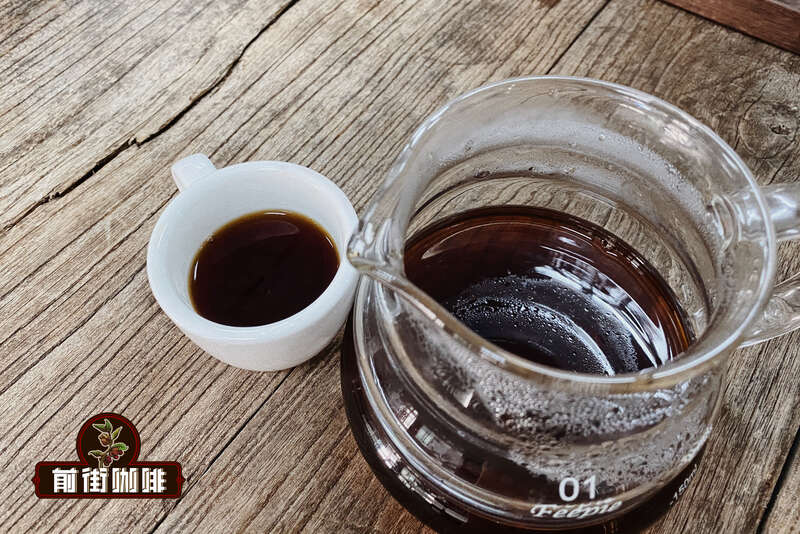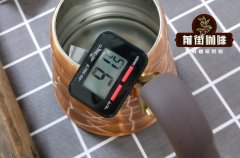The source of Bassirou Rubi coffee beans the flavor of Ruby coffee beans without peel and sun on Pacio Farm
The source of Ruby Rubi coffee beans
In the development of soybean breeding, there is no doubt that the most important development in Brazil in the last century was the Catua bean seed. Kaduai is artificially mixed with Mundo Novo and Kaddura, developed by the Campinas Agricultural Research Institute (Instituto Agronomico) in the state of Sao Paulo, Brazil. IAC), the new world is characterized by high height, while Kaddura's compact and short tree is suitable for intensive planting and picking. Kaduai, which combines the advantages of both, was developed in 1949 and then tested for subsequent generations. Finally, it was officially released in 1972 and is still one of the most important beans in Brazil today.
New World, one of Kaddura's parents, is itself a natural hybrid of bourbon and iron pickup. Discovered in Sao Paulo, Brazil in 1943, the tree is tall and highly yield. it is very suitable for the native climate of Brazil and is very common on Brazilian farms.
However, before the official release of Kaduai, IAC has been developing the second-generation Kaduai since the 1960s, hoping to improve Kaduai's shortcomings, on the one hand, to be higher, and on the other hand to maintain vitality after the beginning of the results. Breeders use Kaduai to backcross the new world to increase the proportion of new world genes. The new version of Kaduai developed by this breeding process is Rubi. Ruby maintains the short and sturdy tree shape of Kaduai, with round beans, close to bourbon beans, and is better planted at more than 1000 meters, suitable for farms at higher elevations in Brazil.
The development process of improved Kaduai uses not only red kaduai, but also yellow kaduai. The yellow kaduai is mixed with the new world to get another bean "Topazio". The fresh fruit of Topach is yellow and the fresh fruit of Ruby is red, so the breeding unit named the red variety Ruby Rubi and the yellow variety Topaz Topazio.
Introduction of Pacio Farm (Passeio) in Brazil
Fazenda Passeio is located in the center of Sul deMinas, Brazil's best boutique coffee producing area, covering an area of 130ha, located in the mountains between 1100 and 1200 meters above sea level, with fertile soil and abundant Rain Water. The Vieira Ferreira Vieira Ferreira family has been growing coffee for three generations. The current farmer is Adolf Vieira Ferreira (Adolfo Vieira Ferreira), who pays great attention to detail and devotes himself to producing the top Brazilian coffee. In order to pursue the best quality, Pacio Farm employs a large number of people, from planting, harvest, to post-processing, most of the process depends on manual labor.
The main beans grown on the farm are Mundo Novo, Catual, Acaia, lcat, Bourbon and, of course, ruby ruby and topaz Topach. Farmers attach great importance to Yongji development, abide by the Brazilian environmental protection law, the original forest on the farm is designated as a protected area, regularly plant new saplings to maintain the natural ecosystem, often visited by ecologists. The farm provides fairly good benefits for workers, long-term employees and their families live on the farm, and they do not have to worry about their children's schooling, and the farm also provides professional training and education.
At Pachell Farm, artificial harvesting is not carried out until the fresh fruit is fully ripe, and the cherries harvested will be directly placed in a wide sun field for sun exposure, so Pacher's sun beans always contain fruit flavor, and when the drying process is over, they will be placed in the storage room of Muqi for at least 60 days before they are shelled and selected.
Ruby peeled and tanned at Minas Geras Pacio Farm in Brazil
Brazil Minas Gerais Passeio Rubi pulped natural
■ country: Brazil Brazil
■ variety: 100% ruby (ruby) Rubi
■ producing area: Minas Geras Minas Gerais
■ Farm: Pacheo Fazenda Passeio
■ altitude: 1100-1200 m
■ treatment: peeling and tanning Pulped Natural
■ flavor: caramel, dried apple, walnut

Important Notice :
前街咖啡 FrontStreet Coffee has moved to new addredd:
FrontStreet Coffee Address: 315,Donghua East Road,GuangZhou
Tel:020 38364473
- Prev

Santa Barbara, Honduras characteristic San Vincent processing Plant Sun Parainema Coffee brewing suggestion
Santa Barbara production area in addition to dedicated to coffee cultivation, the local natural factors, fertile soil and microclimate increase the conditions for the breeding of coffee fruits. The warm breeze from the Cauca Valley along the river and hillside to Santa Barbara Coffee Manor at high altitude creates a microclimate suitable for coffee cultivation. The manor is located in the volcanic geological area.
- Next

How important is the quality of a good cup of coffee? How does water quality affect the aroma and taste of coffee
The importance of coffee water quality the water content in a cup of coffee is more than 98%, and brewing is the last step in making coffee. The high quality of selected coffee requires more correct brewing techniques and skills, so the quality of water quality is very important. Generally speaking, the water quality with slightly higher hardness but not too high water quality is the most suitable for brewing coffee. The minerals in the water can match the internal substances of the coffee.
Related
- Beginners will see the "Coffee pull flower" guide!
- What is the difference between ice blog purified milk and ordinary milk coffee?
- Why is the Philippines the largest producer of crops in Liberia?
- For coffee extraction, should the fine powder be retained?
- How does extracted espresso fill pressed powder? How much strength does it take to press the powder?
- How to make jasmine cold extract coffee? Is the jasmine + latte good?
- Will this little toy really make the coffee taste better? How does Lily Drip affect coffee extraction?
- Will the action of slapping the filter cup also affect coffee extraction?
- What's the difference between powder-to-water ratio and powder-to-liquid ratio?
- What is the Ethiopian local species? What does it have to do with Heirloom native species?

